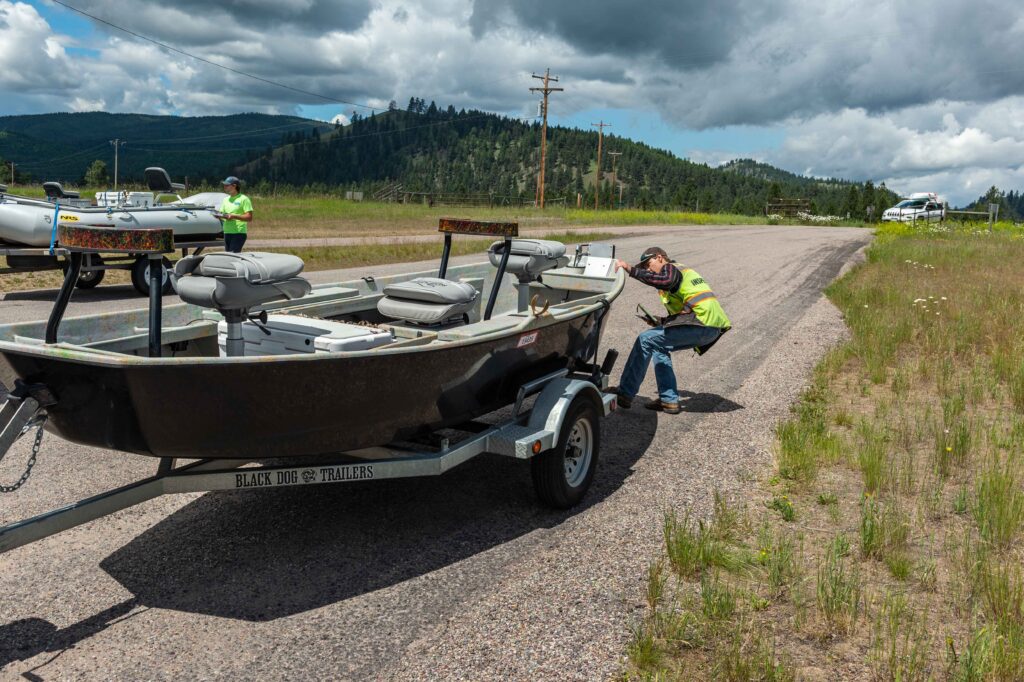This August 2-8, we’re celebrating the first ever Watercraft Inspector Appreciation Week with our partners at Montana Fish Wildlife and Parks and Protect Our Waters Montana. Thanks to our inspectors, aquatic invasive species (AIS) spread is being reduced in our waterways, and we owe them our gratitude and our courtesy when we pull through the station. We know it’s tough to be patient at the boat check when you’re excited to get out on the water, so here are a few tips to make your inspection a breeze.
Clean, Drain, and Dry your gear and watercraft after every use!
Thanks to the magic of self-serve carwashes, this step is easier than ever! Find the closest wash bays near your home (most take credit cards now) and make cleaning out your boat part of your chores at the end of a day on the water. The best time to wash everything is right before you put your boat into dry dock. Pull the plugs on your vessel and allow all water to drain out of your bilge, live wells, bait wells, and motor. Store your boat with the motor in the down position. All inspectors check your motor and if it’s already empty, you just saved yourself a few minutes waiting for it to drain.
Make sure your anchor and anchor rope are clean of mud and vegetation.
If you’ve got some mud and weeds on there, clean them off and also mind your anchor rope to make sure it’s also clean and dry. It’s easy for small bits to get stuck in pulleys, cleats, and fasteners. Anytime you pull your anchor up off the bottom of the lake or river, make sure to get it clean before you put it back in the boat. Makes cleaning up later even easier. This also goes for removing weeds from your lure. Keep the weeds in the water, not in your boat.
Ask yourself “Where and when did I go boating last?”
If you know you’re about to hit the check station, run through your memory banks before you pull in. Inspectors will always ask where you were, how long it’s been, and where you plan to go next. If you’ve recently been in a waterbody with AIS concerns, know that you’re going to get some extra scrutiny. It helps if all your gear is clean and dry!
Get an Inspection Passport for Each Boat and Keep them Handy
If you’re a “frequent flyer” ask your inspector for a Boat Passport for each vessel. Keep them in the glove box of the car you use to tow. Then you’ll always have them for the inspectors when you pull through.
Be courteous!
No body likes a grumpy person. When you remain polite and courteous to your watercraft inspectors, they will get through your inspection faster, guaranteed. The only thing you get out of making a fuss is a longer inspection. Be prepared, answer the questions you’re asked, follow instructions, and they’ll get you on your way as quick as they can.
